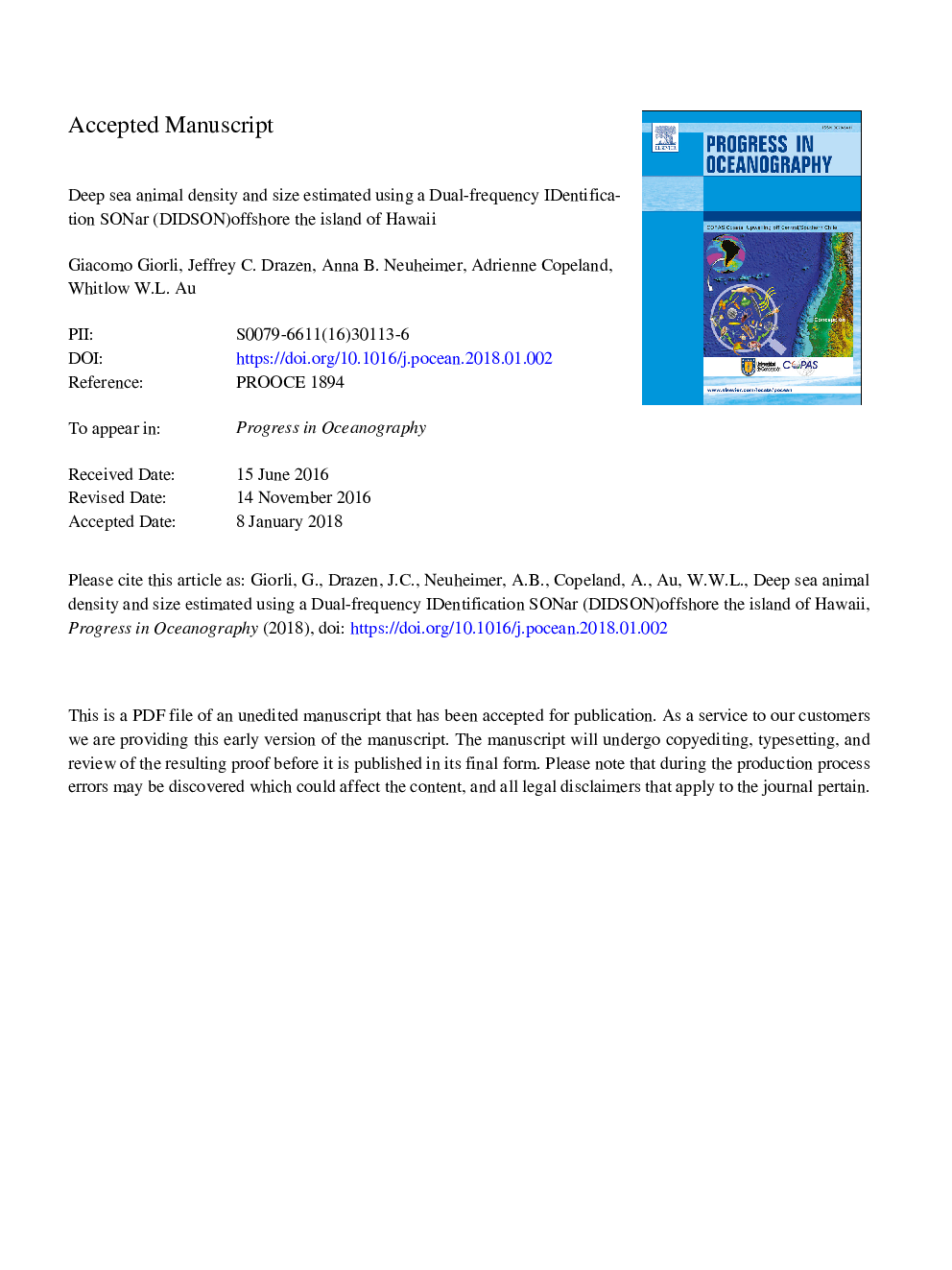| کد مقاله | کد نشریه | سال انتشار | مقاله انگلیسی | نسخه تمام متن |
|---|---|---|---|---|
| 8886733 | 1627898 | 2018 | 38 صفحه PDF | دانلود رایگان |
عنوان انگلیسی مقاله ISI
Deep sea animal density and size estimated using a Dual-frequency IDentification SONar (DIDSON) offshore the island of Hawaii
دانلود مقاله + سفارش ترجمه
دانلود مقاله ISI انگلیسی
رایگان برای ایرانیان
کلمات کلیدی
موضوعات مرتبط
مهندسی و علوم پایه
علوم زمین و سیارات
زمین شناسی
پیش نمایش صفحه اول مقاله

چکیده انگلیسی
Pelagic animals that form deep sea scattering layers (DSLs) represent an important link in the food web between zooplankton and top predators. While estimating the composition, density and location of the DSL is important to understand mesopelagic ecosystem dynamics and to predict top predators' distribution, DSL composition and density are often estimated from trawls which may be biased in terms of extrusion, avoidance, and gear-associated biases. Instead, location and biomass of DSLs can be estimated from active acoustic techniques, though estimates are often in aggregate without regard to size or taxon specific information. For the first time in the open ocean, we used a DIDSON sonar to characterize the fauna in DSLs. Estimates of the numerical density and length of animals at different depths and locations along the Kona coast of the Island of Hawaii were determined. Data were collected below and inside the DSLs with the sonar mounted on a profiler. A total of 7068 animals were counted and sized. We estimated numerical densities ranging from 1 to 7 animals/m3 and individuals as long as 3â¯m were detected. These numerical densities were orders of magnitude higher than those estimated from trawls and average sizes of animals were much larger as well. A mixed model was used to characterize numerical density and length of animals as a function of deep sea layer sampled, location, time of day, and day of the year. Numerical density and length of animals varied by month, with numerical density also a function of depth. The DIDSON proved to be a good tool for open-ocean/deep-sea estimation of the numerical density and size of marine animals, especially larger ones. Further work is needed to understand how this methodology relates to estimates of volume backscatters obtained with standard echosounding techniques, density measures obtained with other sampling methodologies, and to precisely evaluate sampling biases.
ناشر
Database: Elsevier - ScienceDirect (ساینس دایرکت)
Journal: Progress in Oceanography - Volume 160, January 2018, Pages 155-166
Journal: Progress in Oceanography - Volume 160, January 2018, Pages 155-166
نویسندگان
Giacomo Giorli, Jeffrey C. Drazen, Anna B. Neuheimer, Adrienne Copeland, Whitlow W.L. Au,